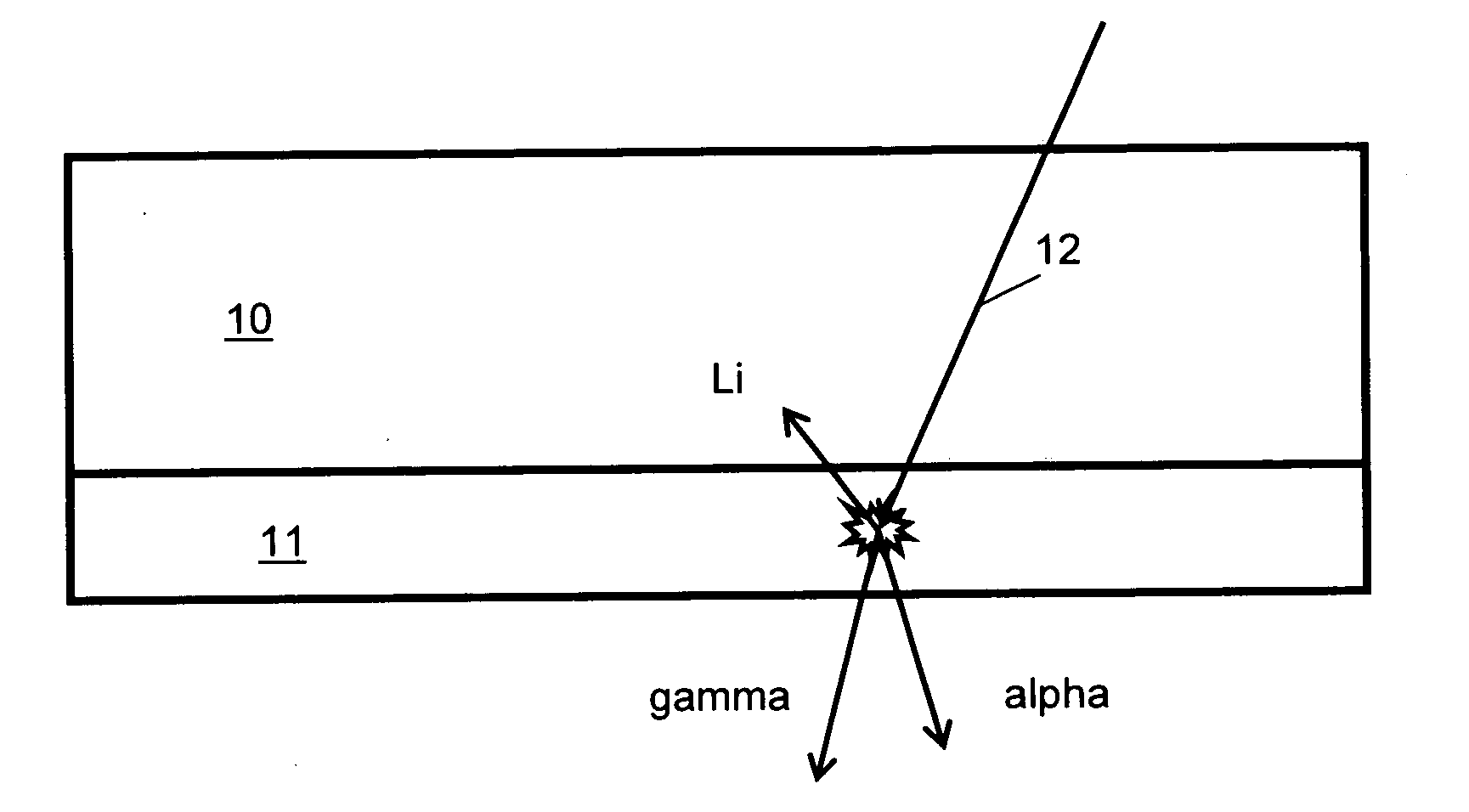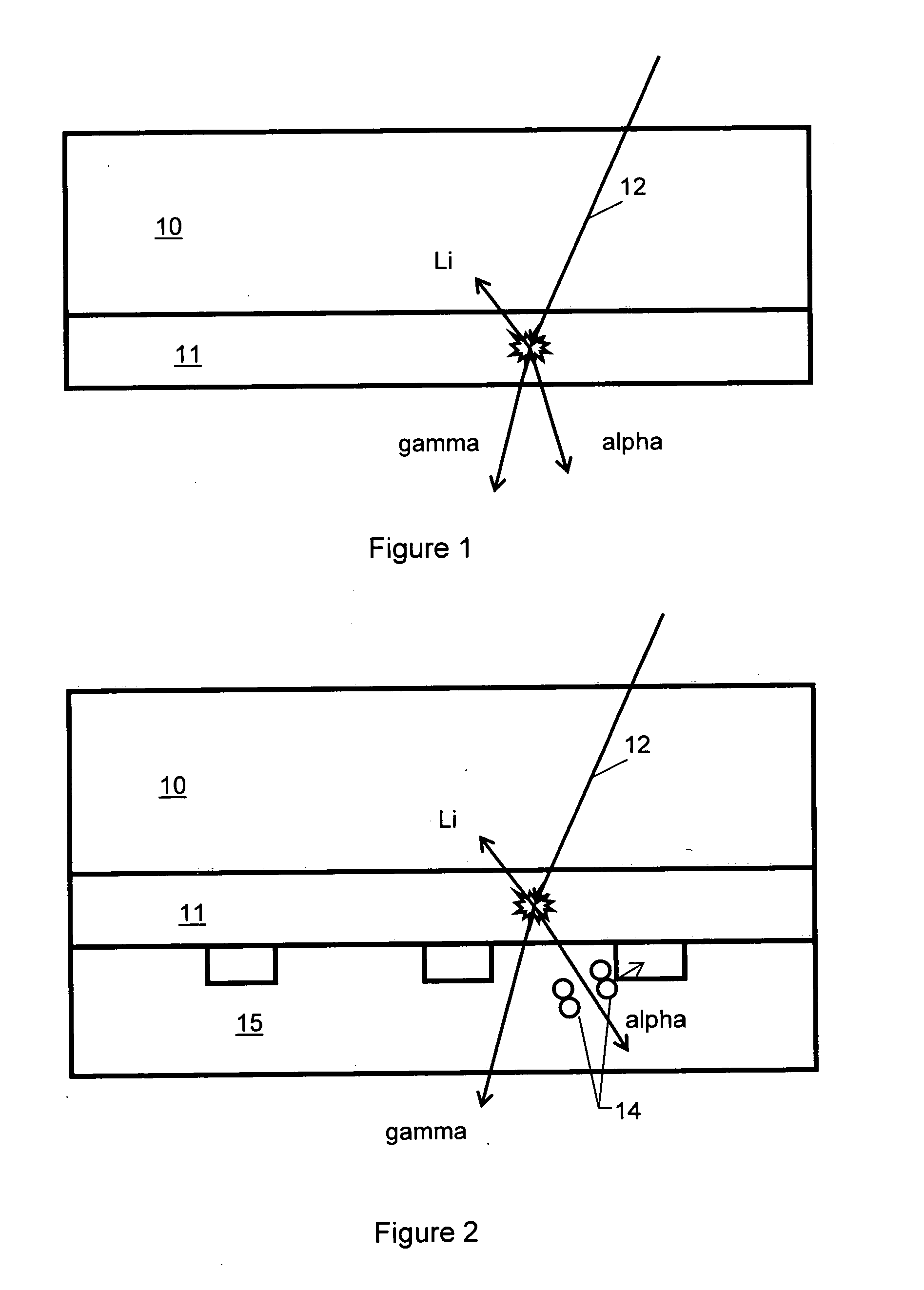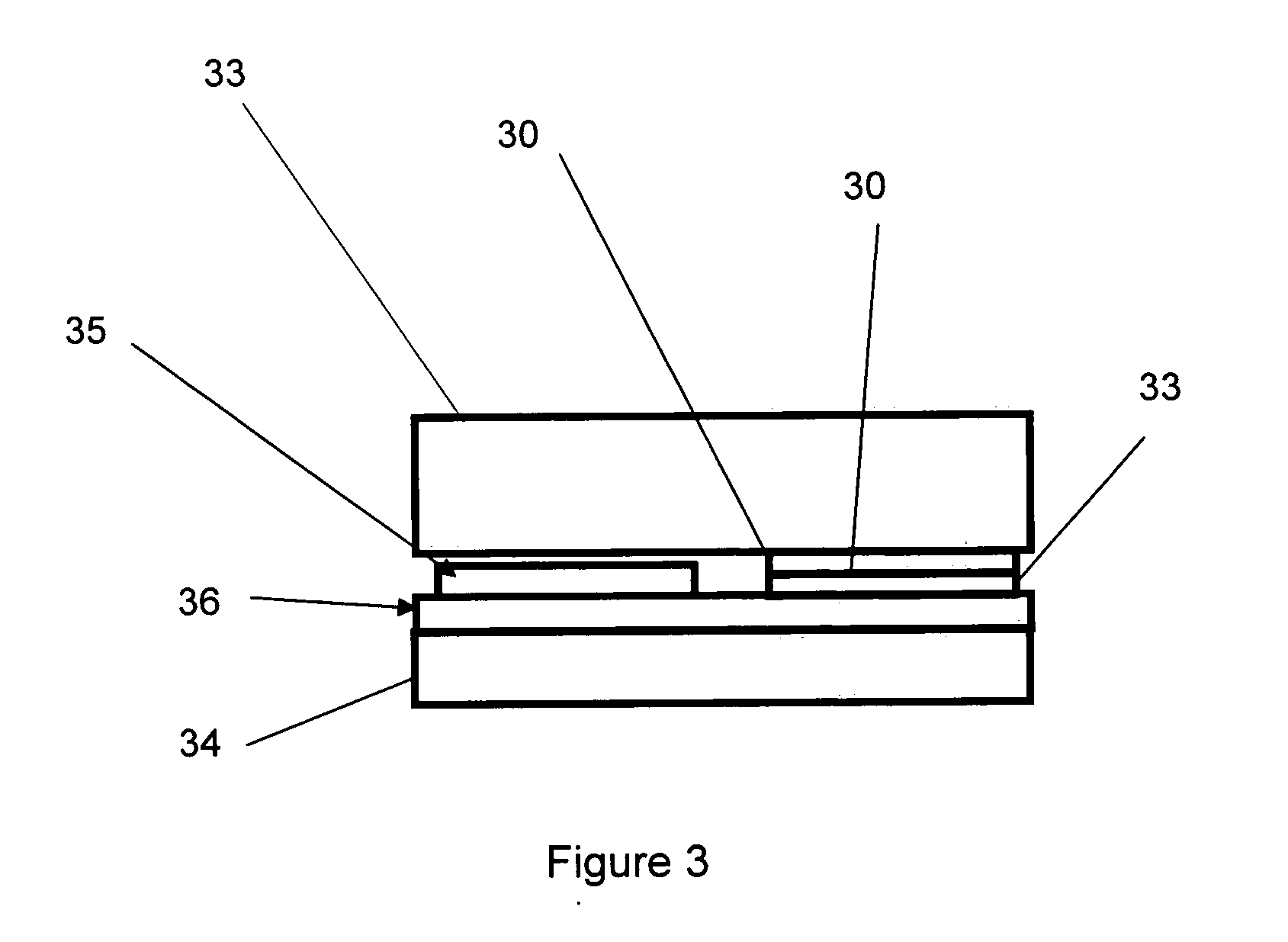Boron thin films for solid state neutron detectors
a solid-state neutron and detector technology, applied in the field of methods and apparatuses for detecting neutrons, can solve the problems of high operating voltage, false alarm, insensitive and cumbersome, etc., and achieve the effects of low cost, high sensitivity, and low cos
- Summary
- Abstract
- Description
- Claims
- Application Information
AI Technical Summary
Benefits of technology
Problems solved by technology
Method used
Image
Examples
Embodiment Construction
[0017] The present invention provides methods and apparatuses for detecting neutrons, which provide high sensitivity, low cost, durability, portability, and scalability. Neutrons interacting with a 10B layer in the present invention result in expression of alpha particles from the 10B layer. The alpha particles can then be detected, for example with a silicon photodetector or an imaging array (e.g., arrays used in digital cameras).
[0018] Experimental work at Sandia National Laboratories (SNL) has shown that a solid 10B layer in combination with a CCD detector can be used to detect neutrons. In this work the researchers deposit the 10B layer on silicon. Since depositing thick layers of boron on silicon leads to delamination, the researchers used pulsed laser deposition (PLD) to deposit the necessary thick layer of boron. The present invention circumvents the use of the expensive PLD technique, by using a substrate that is compatible for boron deposition. Substrates that contain elem...
PUM
 Login to View More
Login to View More Abstract
Description
Claims
Application Information
 Login to View More
Login to View More - R&D
- Intellectual Property
- Life Sciences
- Materials
- Tech Scout
- Unparalleled Data Quality
- Higher Quality Content
- 60% Fewer Hallucinations
Browse by: Latest US Patents, China's latest patents, Technical Efficacy Thesaurus, Application Domain, Technology Topic, Popular Technical Reports.
© 2025 PatSnap. All rights reserved.Legal|Privacy policy|Modern Slavery Act Transparency Statement|Sitemap|About US| Contact US: help@patsnap.com



